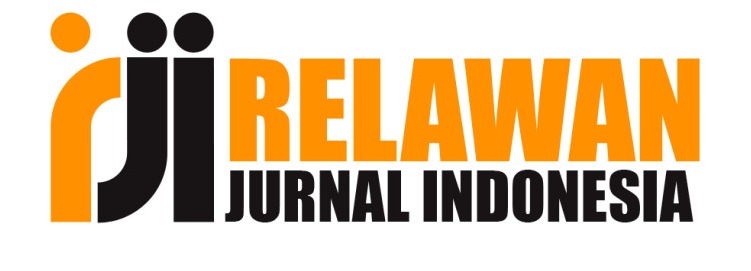BAKTERI PENGHASIL AMILASE YANG DIISOLASI DARI EKOENZIM LIMBAH BUAH-BUAHAN
Abstract
Many of potential enzymes can be found in the ecoenzyme, one of them is amylase. Amylase is an enzyme that is able to hydrolize the glycoside bonds of starch or starch into dextrin, glucose and maltose which is widely used in various industries such as beverages. This study aims to isolate the ecoenzyme bacteria and test their ability to produce amylase. Isolation of ecoenzyme bacteria was carried out using serial dilution methods 10-1, 10-3, 10-5. A total of 0.1 ml of each dilution series was pipetted and spread on the Nutrient agar (NA) medium. The bacterial isolates that grew were then purified and identified by morphological observation, Gram staining and their enzymatic activity was tested using Starch Agar (SA) media qualitatively. The results of this study showed there were 39 bacterial isolates from ecoenzyme with different morphological characteristics. The amylase activity test were found that 34 isolates had a positive activity to hydrolize the starch in the SA media which was indicated by the formation of a clear zone around the bacterial colonies. Each bacterial isolate had a different hydrolysis index value, which ranged from 9.45 to 23.65. The highest clear zone diameter index value from starch hydrolysis was EJM 15 isolate.
References
Arun, C., & Sivashanmugam, P. (2015). “Investigation of Biocatalytic Potential of Garbage Enzyme and Its Influence on Stabilization of Industrial Waste Activated Sludge.” Process Safety and Environmental Protection 94(C), 471–78. doi: 10.1016/j.psep.2014.10.008.
Basitoh, Y. K., Suarsini, E., & Prabaningtyas, S. (2018). Eksplorasi Bakteri Amilolitik Potensial dari Ranu Pani, Ranu Regulo, Ranu Grati dan Telaga Ngebe.” Jurnal Ilmu Hayat 3(2), 52–63. http://journal2.um.ac.id/index.php/jih/article/view/22595.
Choirunnisa, H. N., Sari, R. Y., Hastuti, U. S., & Witjoro, A. W. (2018). “Identifikasi Dan Uji Kemampuan Hidrolisis Pada Bakteri Amilolitik Dan Proteolitik Yang Diisolasi Dari Wadi, Makanan Khas Kalimantan Tengah.” Bionature 18(2), 99–109. doi: 10.35580/bionature.v18i2.6138.
Damayanti, S. S., Komala, O., & Effendi, E. M. (2020). Identifikasi Bakteri Dari Pupuk Organik Cair Isi Rumen Sapi. Ekologia 18(2), 63–71. doi: 10.33751/ekol.v18i2.1627.
Fat, A. G. (2005). “Revista Brasileira de Ciências Farmacêuticas Publicações Novas/ New Publications Ciência E Tecnologia De Alimentos.” 41, 2005.
Fitri, Lenni, & Yasmin, Y. (2011). Morfologi Koloni Bakteri Kitinolitik. Ilmiah Pendidikan Biologi 3(2), 20–25. http://uilis.unsyiah.ac.id/unsyiana/items/ show/3158.
Harahap, R. G., Nurmawati, Dianiswara, A., & Putri, D. L. (2021). Pelatihan Pembuatan Eco-Enzyme Sebagai Alternatif Desinfektan Alami Di Masa Pandemi Covid-19 Bagi Warga Km. 15 Kelurahan Karang Joang. Sinar Sang Surya: Jurnal Pusat Pengabdian Kepada Masyarakat 5(1), 67–73. doi.org/10.24127/sss.v5i1.1505.
Hardi, Handayani, E., Nugroho, R. A., Saptiani, G., Sarinah, R., Agriandini, M, & Mawardi M. (2018). Identification of Potentially Pathogenic Bacteria from Tilapia (Oreochromis Niloticus) and Channel Catfish (Clarias Batrachus) Culture in Samarinda, East Kalimantan, Indonesia. Biodiversitas 19(2), 480–88. doi: 10.13057/biodiv/d190215.
Herawati, H. (2016). Potensi Pengembangan Produk Pati Tahan Cerna Sebagai Pangan Fungsional. Jurnal Penelitian Dan Pengembangan Pertanian 30(1), 31–39. doi: http://dx.doi.org/10.21082/jp3.v30n1.2011.p31-39.
Idris, H. (2016). Tanaman Kecubung (Datura Metel L.) Sebagai Bahan Baku Insektisida Botanis Untuk Mengendalikan Hama Aspidomorpha Milliaris F. Jurnal Penelitian Tanaman Industri 21(1), 41. doi: 10.21082/littri.v21n1.2015.41-46.
Munif, A., Wiyono, S., & Suwarno. (2016). “Isolasi Bakteri Endofit Asal Padi Gogo Dan Potensinya Sebagai Agens Biokontrol Dan Pemacu Pertumbuhan.” Jurnal Fitopatologi Indonesia 8(3), 57–64. doi: 10.14692/jfi.8.3.57.
Mutiarahmi, C. N., Hartady, T., & Lesmana R. (2021). Use of Mice As Experimental Animals in Laboratories That Refer To the Principles of Animal Welfare: A Literature Review.” Indonesia Medicus Veterinus 10(1), 134–45. doi: 10.19087/imv.2020.10.1.134.
Nasution, P. A., Annisah & Thasmi C. N. (2017). Total Bakteri Asam Laktat (BAL) Pada Caecum Puyuh (Coturnix Japonica). Jimvet 01(4):774–79. DOI: https://doi.org/10.21157/jim%20vet..v1i4.5470.
Rahmatullah, W., Novianti E., & Sari, A. D. L. (2021). Identifikasi Bakteri Udara Menggunakan Teknik Pewarnaan Gram. Jurnal Ilmu Kesehatan Bhakti Setya Medika 6(2), 84–92. https://www.poltekkes-bsi.ac.id/jurnal /index.php/bsm/article/view/62.
Risnoyatiningsih, S. (2011). “Hidrolisis Pati Ubi Jalar Kuning Menjadi Glukosa Secara Enzimatis.” Jurnal Teknik Kimia 5(2), 417–24. http://ejournal.upnjatim.ac.id/ index.php/tekkim/article/view/146.
Silaban, S., & Simamora, P. (2018). “Isolasi Dan Karakterisasi Bakteri Penghasil Amilase Dari Sampel Air Tawar Danau Toba.” Edu Chemia (Jurnal Kimia Dan Pendidikan) 3(2), 222. doi: 10.30870/educhemia.v3i2.3438.
Sukmawati & Hardianti., F. (2018). “Analisis Total Plate Count (TPC) Mikroba Pada Ikan Asin Kakap Di Kota Sorong Papua Barat.” Jurnal Biodjati 3(1), 72. doi: 10.15575/biodjati.v3i1.2368.
Ulfa, Atiqa, Endang Suarsini, and Mimien Henie. (2016). Isolation and Mercury Sensitivity Test of Bacterias Isolated from Waste Disposal in Gold Mining Area in West S.” Proceeding Biology Education Conference Pendidikan Biologi FKIP UNS 13(1), 793–99.
Yasin, M. N., Astuti, A., & Gunawan, R. (2017). “Screening Bakteri Penghasil Amilase Dari Sedimen Sumber Air Panas Dondang Muara Jawa Screening Amilase Producing Bacteria From Dondang Hot Springs Sediment Muara Jawa.” Jurnal Atomik 02(2), 213–15. http://jurnal.kimia.fmipa.unmul.ac.id/index.php/ JA/article/view/487/322.
















